WHAT ARE VISUAL SUPPORTS?
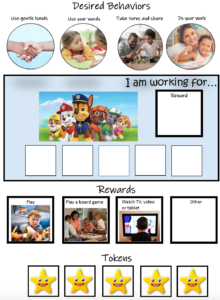
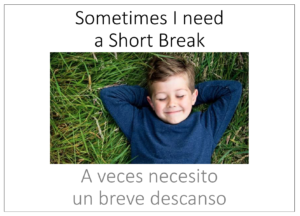
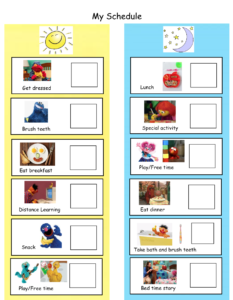
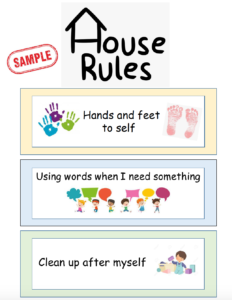
Visuals Supports are what keeps most of us on track on a daily basis! As adults, these visuals come in the form of calendars, checklists, reminders/sticky notes, etc. But these supports are not just beneficial for adults! Visual supports provide information about an expectation, routine or activity and they can increase your child’s ability to comprehend verbal instructions as well as communicate their needs and regulate their emotions. Visual supports typically consist of items, pictures, symbols, drawings, and/or printed words.
ALL young children, including children with special needs, highly benefit from visual supports to help them understand the world around them. For children who are still developing language and communication skills, these supports can be the building blocks of expressive and receptive language. For children who exhibit challenging behavior, visuals can be the key to setting the stage for success in any type of behavior strategy or plan.
SHOULD I USE VISUAL SUPPORTS WITH MY CHILD?
Does your child have difficulty when there is a change in routine? Or do they struggle with following your verbal directions? If you are seeing them ignore you, whine or tantrum consistently; and if your lectures, verbal reminders, nagging or yelling aren’t helping, Visual Supports may be a great tool to try!
Visual Supports can assist with a variety of things including: preventing challenging behavior, easing the anxiety associated with “unknown” situations, support expressive and receptive language skills and increase understanding of rules and expectations. In addition, visuals can help build your child’s independence as they are able to use the visuals as a reference instead of always relying on an adult for direct prompts, reminders and reinforcement.
WHAT KINDS OF VISUALS SUPPORTS ARE THERE?
Visual Supports can range from Visual Timers, Visuals of Expectations, Visual Schedules, First/Then Strips, Token Economies, Scripted Stories etc. But they can also be as simple as the Arrangement of an Environment. You can visit our VISUAL RESOURCES tab on the main page to check out some of the FREE Visual Supports options we have on this website.
When my preschool aged child started with Distance Learning, it was NOT a smooth transition for either of us! Even with every reminder, bribe and threat, he would NOT sit for his online class. He was out of his seat, touching everything in sight and just not paying attention or engaged. I felt frustrated, embarrassed and discouraged! However, I took a step back, changed the game plan, and decided to try adding some Visual Supports. When I looked at his learning environment for distance learning at home, I realized the space was too visually stimulating for my 3 year old! He was working at the kitchen table within an arm’s reach of stacks of paper/junk, food/snacks, his art work displayed all over the fridge, people/dogs/cats coming in and out of the room and his toys within eye sight. I needed to re-arrange the environment to create visual boundaries to help encourage his on-task behavior. So, I decided to clear off an area in the corner of the room and set up a small table with his chair facing the wall (instead of outwards towards the distractions). I took down the bright distracting artwork, kept the animals and people in other rooms during school time and made sure toys were not in sight. In front of him he had the computer and just the basic materials he would need for the session (crayons and some paper). Believe it or not, just making these simple tweaks to the arrangement of the environment really did limit the distractions and helped me keep him focused and engaged longer.
Here is another example of Arrangement of the Environment:
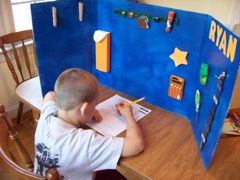
SO HOW DO YOU GET STARTED USING VISUAL SUPPORTS?
If you are looking for ideas on what Visual Supports to try, check out our Visual Resources tab and explore our categories of pre-made and free Visual Supports including: Emotional Regulation, Expectations, First-Then, Schedules, Scripted Stories, Sensory and Token Economies. We update these sections periodically with new Visuals so feel free to bookmark it and come back and visit often!
In addition, the internet is FULL great Visual Supports resources! Often a quick Google Search can help locate something specific you may be looking for. There are also great Apps you can get for Schedules, First-Then, Token Economies etc.
But as a reminder, you don’t need fancy printed visuals to implement a Visual Support! When we didn’t have a working printer at home, I made a quick First-Then visual by drawing boxes on paper. I had my child pick the color markers we used to draw the boxes and had him help me draw the pictures, which made him extra excited to actually use it! You can create your own at home by drawing symbols or quick and easy line drawings. And get them involved! Have them help create or give input. Some of the best visual supports that work most effectively with kids are the ones your kids see you make or help make! When the child gets a say or participates in the visual creation, there is often a much higher level of buy in and engagement with it.
FINAL NOTES ON VISUAL SUPPORTS
Without effective teaching and implementation, Visual Supports are just another piece of paper! It is up to us as adults to ASSIGN MEANING to make the visual useful and effective. Remember to explicitly TEACH your child about the visual by using modeling, repetition and consistency while providing lots of positive reinforcement along the way. Sometimes you will see immediate results, while other times it may take days, weeks or months—but it is important to STICK WITH IT and stay consistent!
